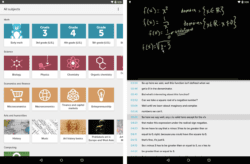Augmented Reality Industries: Top 10 Sectors Using AR

Augmented reality (AR) is an emerging technology that blends digital information with the real world, enhancing our perception and interaction with the environment. It overlays virtual objects, data, and graphics onto the physical world, allowing users to experience an immersive and interactive digital environment.
In recent years, augmented reality has gained significant attention and has become an integral part of the larger concept known as the Metaverse. The Metaverse is a virtual universe that encompasses multiple interconnected virtual worlds, where users can interact with each other and with digital content in real-time.
The integration of augmented reality into the Metaverse has opened up numerous opportunities for various industries. Let’s explore some of the key sectors that are leveraging AR within the larger Metaverse framework:
1. Gaming and Entertainment: Augmented reality has revolutionized the gaming industry by providing immersive experiences that combine the real world with virtual elements. AR games such as Pokémon Go introduced millions of players to the concept, allowing them to hunt virtual creatures in real-world locations. With the Metaverse, AR gaming experiences can become more interconnected, enabling multiplayer interactions and shared experiences across different virtual worlds.
2. Retail and E-commerce: Augmented reality has transformed the retail and e-commerce sectors by enabling virtual try-on experiences, product visualizations, and interactive shopping. In the Metaverse, users can virtually explore virtual stores and try on virtual clothing, accessories, or even test out furniture and home decor in their own physical spaces. This technology enhances the consumer experience, increases engagement, and reduces the need for physical inventory.
3. Healthcare: AR is making a significant impact on the healthcare industry by improving medical training, surgical procedures, and patient care. In the Metaverse, healthcare professionals can use AR to access real-time patient data, overlay diagnostic information, and collaborate with experts from different locations. Surgeons can benefit from AR-assisted procedures, with digital overlays providing guidance during complex surgeries.
4. Education and Training: Augmented reality has immense potential in the field of education and training. In the Metaverse, students can experience interactive and immersive learning environments where virtual objects, historical events, and scientific phenomena come to life. AR can facilitate hands-on learning experiences, promote engagement, and enhance knowledge retention by providing interactive simulations and visualizations.
5. Architecture and Design: Augmented reality is reshaping the architecture and design industries by allowing professionals to visualize and present their concepts in real-world contexts. Within the Metaverse, architects can overlay virtual models of buildings onto physical sites, enabling clients to experience proposed designs in their actual surroundings. This technology streamlines the design process, improves client communication, and facilitates more informed decision-making.
6. Tourism and Travel: Augmented reality can enhance the tourism and travel industry by providing interactive and immersive experiences for visitors. In the Metaverse, users can explore virtual replicas of famous landmarks, historical sites, or natural wonders, enriching their travel experiences and providing educational content. AR can also offer real-time information, directions, and translations, making it easier for tourists to navigate and discover new destinations.
7. Manufacturing and Maintenance: AR is being used in manufacturing and maintenance industries to provide workers with real-time information, instructions, and guidance. In the Metaverse, AR can assist technicians by overlaying virtual instructions on physical machinery, helping them identify issues and perform repairs more efficiently. This technology improves productivity, reduces errors, and enhances worker safety.
These are just a few examples of how augmented reality is being integrated into various industries within the larger Metaverse. As the technology advances and becomes more accessible, we can expect to see even more innovative applications and transformative experiences that reshape the way we live, work, and interact within virtual worlds.
What is Extended Reality?
Extended Reality (XR) is an umbrella term that encompasses various immersive technologies, including virtual reality (VR), augmented reality (AR), and mixed reality (MR). XR extends our perception of reality by blending the physical and virtual worlds, creating new experiences and environments that combine real and digital elements.
1. Virtual Reality (VR): Virtual reality is a fully immersive digital experience that transports users to simulated environments, completely replacing their real-world surroundings. Users wear VR headsets that block out the physical world and display computer-generated visuals and audio. With VR, users can explore and interact with virtual objects, places, and characters, creating a sense of presence and immersion.
2. Augmented Reality (AR): Augmented reality overlays digital content onto the real world, enhancing our perception of reality. AR devices, such as smartphones or smart glasses, use cameras and sensors to recognize and track the physical environment. Virtual objects, data, and graphics are then superimposed onto the user’s view, blending the virtual and real elements. AR enhances our understanding of the real world by adding contextual information, offering interactive experiences, and enabling virtual object manipulation.
3. Mixed Reality (MR): Mixed reality combines elements of both virtual reality and augmented reality. It allows users to interact with both virtual and real-world objects in real-time. MR headsets, such as Microsoft HoloLens, provide a transparent display that overlays virtual content onto the physical environment, maintaining the user’s perception of the real world while adding virtual elements. MR enables users to interact with virtual objects as if they were physically present, fostering realistic and interactive experiences.
Extended Reality is not limited to individual technologies but represents a continuum that ranges from completely virtual (VR) to partially augmented (AR) and fully blended (MR) experiences. The term “extended” refers to the expansion of our reality through the integration of digital content, creating new possibilities for communication, entertainment, education, training, and numerous other applications.
The adoption of XR is transforming various industries:
1. Entertainment and Gaming: XR is revolutionizing the entertainment and gaming industries by providing immersive experiences. VR allows users to fully immerse themselves in virtual worlds, while AR enhances gaming experiences by overlaying virtual objects onto the real environment. MR enables interactive storytelling, where virtual characters can interact with the physical world and users.
2. Education and Training: XR offers exciting opportunities in education and training. VR and AR provide interactive and immersive learning experiences, allowing students to explore complex concepts, historical events, or scientific phenomena. XR simulations can simulate dangerous or expensive training scenarios, enabling learners to practice without real-world risks.
3. Healthcare: XR is transforming healthcare by enabling realistic training simulations, surgical planning, and patient care. Medical professionals can use VR and AR to practice procedures, visualize patient anatomy, and plan surgeries. AR overlays relevant patient data and instructions directly onto the surgeon’s field of view during procedures, enhancing precision and reducing the risk of errors.
4. Architecture and Design: XR is reshaping architecture and design industries by allowing professionals to visualize and present their concepts in immersive ways. VR enables architects to create virtual walkthroughs of buildings and environments, providing clients with a realistic sense of space. AR allows architects to overlay virtual models onto physical sites, facilitating design decision-making.
5. Manufacturing and Engineering: XR is being utilized in manufacturing and engineering for training, design visualization, and maintenance. VR and AR can simulate complex assembly processes, guide workers in real-time, and provide remote assistance. MR allows engineers to interact with digital models overlaid on physical machinery, facilitating maintenance and repairs.
6. Retail and E-commerce: XR is enhancing the retail and e-commerce experience by enabling virtual try-on, personalized shopping, and immersive product visualization. AR allows customers to try on virtual clothes, accessories, or visualize furniture in their own spaces. VR provides virtual
stores and showrooms, enabling customers to browse and purchase products from anywhere.
As technology advances and XR becomes more accessible, we can expect to see further integration across industries, unlocking new possibilities and immersive experiences that blur the boundaries between the physical and virtual worlds. XR has the potential to revolutionize the way we work, communicate, learn, and interact, creating a more connected and immersive future.
What is Augmented Reality?
Augmented Reality (AR) is a technology that overlays digital information, such as images, videos, 3D models, or interactive elements, onto the real world, enhancing our perception and interaction with our surroundings. Unlike Virtual Reality (VR), which creates entirely computer-generated environments, AR enhances the real world by adding virtual elements to it.
AR experiences can be accessed through various devices, including smartphones, tablets, smart glasses, or headsets. These devices use cameras, sensors, and algorithms to detect and track the user’s environment, allowing virtual objects to be precisely placed and anchored in the real world.
There are two main types of AR:
1. Marker-based AR: Marker-based AR relies on the recognition of specific visual markers, usually in the form of QR codes, images, or patterns. When the device’s camera detects these markers, it triggers the display of corresponding digital content on the screen, precisely aligned with the marker’s position and orientation. This type of AR is commonly used in advertising, promotional campaigns, and interactive print media.
2. Markerless AR: Markerless AR, also known as location-based or SLAM (Simultaneous Localization and Mapping) AR, does not require predefined markers. Instead, it uses the device’s sensors, such as GPS, accelerometer, gyroscope, and camera, to detect and track the user’s position and movement in real-time. Virtual objects are then placed and anchored in the user’s environment based on this tracking data. Markerless AR is commonly used in navigation apps, gaming, and interactive experiences.
Key components and technologies used in AR include:
1. Display: AR content is typically displayed on the user’s device screen, whether it’s a smartphone, tablet, or dedicated AR headset. Some AR headsets, such as smart glasses, provide a transparent display, allowing virtual content to be overlaid onto the user’s field of view while still seeing the real-world surroundings.
2. Sensors: AR devices use various sensors, including cameras, accelerometers, gyroscopes, magnetometers, and depth sensors, to gather real-time data about the user’s environment and movement. This data is used to track the user’s position, orientation, and gestures, enabling accurate placement of virtual objects.
3. Computer Vision: Computer vision algorithms analyze the camera input to recognize and understand the user’s environment. This involves identifying objects, surfaces, and spatial features in the real world, allowing virtual objects to interact and react realistically with the physical environment.
4. Tracking: AR relies on robust tracking techniques to continuously monitor the user’s position and movement relative to the environment. This ensures that virtual objects maintain their position and alignment in the user’s view as they move or interact with the real world.
Difference between Augmented Reality, Mixed Reality and Virtual Reality
Augmented Reality (AR), Mixed Reality (MR), and Virtual Reality (VR) are distinct technologies that offer different levels of immersion and interaction with the virtual world. While they all fall under the umbrella of immersive technologies, understanding their differences is essential. Here’s an in-depth look at each technology:
1. Augmented Reality (AR):
Augmented Reality overlays virtual elements onto the real world, enhancing our perception and interaction with the environment. AR technology utilizes devices like smartphones, tablets, smart glasses, or headsets equipped with cameras, sensors, and displays. The key characteristics of AR are:
– Real-world integration: AR preserves the user’s connection to the physical world by overlaying digital content onto the real environment. Users can see and interact with both real and virtual objects simultaneously.
– Contextual information: AR provides additional information, graphics, or interactive elements that are contextually relevant to the user’s surroundings. For example, pointing a smartphone at a building can display information about its history or nearby restaurants.
– Examples: Pokémon Go, Snapchat filters, AR-based navigation apps.
2. Mixed Reality (MR):
Mixed Reality combines elements of both virtual reality and augmented reality, allowing virtual objects to interact with the real world in real-time. MR experiences are typically delivered through headsets, like Microsoft HoloLens, which blend virtual and real-world content seamlessly. The key characteristics of MR are:
– Virtual-Real integration: MR devices provide a transparent display, enabling users to view and interact with virtual objects while still seeing and interacting with the real world.
– Spatial mapping: MR systems map the physical environment in real-time, enabling virtual objects to be precisely placed and anchored to specific locations or surfaces.
– Examples: Microsoft HoloLens, Magic Leap, spatial computing applications.
3. Virtual Reality (VR):
Virtual Reality completely immerses users in computer-generated environments, creating a sense of presence and detachment from the physical world. VR experiences typically require head-mounted displays (HMDs), such as Oculus Rift or HTC Vive, to block out the real world and replace it with a virtual one. The key characteristics of VR are:
– Full immersion: VR aims to transport users to entirely virtual environments, shutting out the physical world. Users perceive and interact with the digital world as if it were their reality.
– Head tracking: VR systems track the user’s head movements to update the perspective of the virtual environment, allowing users to look around and explore the virtual world in a natural manner.
– Examples: Oculus Rift, HTC Vive, immersive gaming experiences.
Key Differences:
1. Immersion Levels: VR offers the highest level of immersion, fully replacing the real world with a virtual one. MR blends virtual and real elements, while AR overlays virtual content onto the real world without fully replacing it.
2. Real-world Interaction: AR allows users to interact with real-world objects and people while overlaying virtual elements. MR also enables interaction with real-world objects, but virtual objects can respond and interact with the real environment. In VR, users interact solely with virtual objects and environments.
3. Device Requirements: AR experiences can be accessed through devices like smartphones or smart glasses, while MR typically requires specialized headsets with transparent displays. VR necessitates dedicated headsets that fully block out the real world.
4. Use Cases: AR finds applications in gaming, advertising, navigation, and real-time information overlay. MR has uses in architecture, design, education, and collaborative workspaces. VR is popular in gaming, simulations, training, and virtual tours.
While AR, MR, and VR share the goal of immersive experiences, they differ in the degree of immersion, interaction with the real world, and the technology used to deliver those experiences. Each technology has its unique strengths and applications, catering to different use cases and user requirements.
Technological Advancements 🚀
Live demonstrations and displays of cutting-edge technologies, including robotics, artificial intelligence, virtual reality, augmented reality, blockchain, and more. Incredible advancements across various industries. pic.twitter.com/5y4lCMV0Hm
— Shayma Taii (@ShaymaTaii) June 18, 2023
Different Devices to Experience Augmented Reality
There are various devices available that allow users to experience augmented reality (AR) and immerse themselves in interactive virtual content. These devices range from widely accessible smartphones and tablets to more specialized hardware specifically designed for AR experiences. Here are some of the key devices used to experience AR:
1. Smartphones and Tablets:
Smartphones and tablets are the most common and accessible devices for experiencing AR. With their built-in cameras, sensors, and processing power, these devices can run AR applications and overlay digital content onto the real world. Users can simply download AR-enabled apps from app stores and use the device’s display to view and interact with virtual objects. Popular examples include Apple’s ARKit for iOS devices and Google’s ARCore for Android devices.
2. Smart Glasses:
Smart glasses are wearable devices that provide a hands-free AR experience by overlaying digital content onto the user’s field of view. These glasses typically include a display, sensors, and a built-in camera to capture the user’s environment. Some smart glasses also offer audio capabilities and voice recognition for a more immersive and interactive experience. Notable examples include Microsoft HoloLens, Magic Leap One, and Google Glass Enterprise Edition.
3. Headsets and HMDs:
Headsets and head-mounted displays (HMDs) are devices designed for virtual reality (VR) experiences but can also support AR functionalities. These devices typically include high-resolution displays, sensors for head tracking, and sometimes cameras for capturing the user’s environment. While VR headsets fully immerse users in virtual worlds, some models, such as the Oculus Quest and HTC Vive Pro, also offer passthrough AR features, enabling users to switch between VR and AR experiences.
4. AR Glasses and Wearables:
AR glasses and wearables specifically focus on delivering AR experiences. These devices are designed to be lightweight, comfortable, and provide an unobstructed view of the real world while overlaying digital content. They often integrate cameras, sensors, and display systems to recognize and interact with the user’s surroundings. Examples of AR glasses include Vuzix Blade, Epson Moverio, and Nreal Light.
5. Projection-Based Systems:
Projection-based AR systems use projectors to overlay digital content onto physical objects or surfaces. These systems can turn any flat surface, such as walls or tables, into interactive displays. Projected AR can be used for various applications, including gaming, interactive presentations, and retail displays. Devices like the Sony Xperia Touch and Projector AR by Lightform offer projection-based AR experiences.
6. Handheld AR Devices:
Handheld AR devices are dedicated devices designed specifically for AR experiences. They often resemble small handheld consoles or devices with integrated displays, cameras, and sensors. These devices offer a more immersive AR experience than smartphones and tablets, with enhanced tracking capabilities and dedicated controls. Examples include the Nintendo 3DS, Sony PlayStation Vita, and the recently introduced Niantic’s Pokémon GO Plus.
It’s worth noting that the landscape of AR devices is continuously evolving, and new technologies and devices are being developed and released regularly. As the AR industry progresses, we can expect advancements in device capabilities, form factors, and user experiences, making AR more accessible and immersive for users in various fields, including gaming, education, retail, healthcare, and beyond.
Also read: Top 9 Industries Making Creative Use Of Virtual Reality
Top 10 Augmented Reality Industries Benefiting from AR Technology
Augmented reality (AR) is a technology that superimposes a computer-generated image on a user’s view of the real world, thus providing a composite view. AR has the potential to revolutionize many industries, and there are already a number of industries that are benefiting from AR technology.
Here are the top 10 AR industries:
- Retail. AR is being used in retail to help customers visualize products in their homes, try on clothes virtually, and learn more about products. For example, IKEA has an AR app that allows customers to see how furniture would look in their homes.

- Manufacturing. AR is being used in manufacturing to improve efficiency, quality, and safety. For example, General Electric uses AR to help technicians repair jet engines.

- Healthcare. AR is being used in healthcare to provide surgeons with real-time information, train medical students, and deliver remote patient care. For example, Magic Leap is developing an AR headset for surgeons that will provide them with real-time information about the patient’s anatomy.

- Education. AR is being used in education to make learning more engaging and interactive. For example, Khan Academy uses AR to help students learn about math and science.

- Tourism. AR is being used in tourism to provide visitors with a more immersive and interactive experience. For example, the Louvre Museum in Paris has an AR app that allows visitors to see how the museum looked in the past.

- Gaming. AR is being used in gaming to create more immersive and realistic experiences. For example, Pokémon Go is an AR game that allows players to catch Pokémon in the real world.
- Automotive. AR is being used in the automotive industry to improve safety, navigation, and entertainment. For example, BMW is developing an AR head-up display that will show drivers important information about the road ahead.

- Sports. AR is being used in sports to provide fans with a more immersive and interactive experience. For example, the NFL is using AR to show fans how players are performing on the field.
- Construction. AR is being used in construction to improve safety, productivity, and quality. For example, Trimble is using AR to help construction workers see the building plans in real time.
- Logistics. AR is being used in logistics to improve efficiency and accuracy. For example, UPS is using AR to help its drivers find packages more quickly.
These are just a few of the industries that are benefiting from AR technology. As AR technology continues to develop, we can expect to see even more industries adopt AR and use it to improve their businesses.


























































